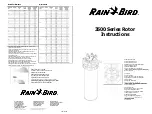
20
ST600R Autopilot Control Unit
Verifying Computed Positions
• Verify the computed position with a dead reckoned position,
calculated from the average course steered and the distance logged.
Plot Frequency
• In open water, plots should be at least hourly.
• In confined waters, or when potential hazards are near, plots should
be more frequent.
• Local variations in radio signal quality, and changes in the tidal
stream, will produce deviations from the desired track.
Setting Waypoints
• When setting waypoints, remember that deviations will occur.
• Thoroughly check along each track.
• Check up to 0.5nm each side of the track to ensure that there are no
hazards within the zone.
General
The use of track mode will enable accurate track keeping even in
complex navigational situations. However, it cannot remove the
responsibility of the skipper to ensure the safety of his vessel at all
times by careful navigation and frequent position checks.
3.2 Operation in Vane Mode (WindTrim)
Vane mode, also known as WindTrim, allows the autopilot to
maintain a course relative to an apparent wind angle. It uses wind
trim to eliminate the effects of turbulence and short term wind
variations, and provides smooth precise performance under Vane
mode operation with minimal power consumption.
Vane mode uses the fluxgate compass as the primary heading
reference and, as changes in the apparent wind angle occur, the
locked compass heading is adjusted to maintain the original
apparent wind angle.
To use Vane mode, the autopilot must receive wind information
from one of the following sources:
• SeaTalk Wind instrument, connected to the autopilot via SeaTalk
• NMEA wind information
•
Raymarine
wind vane connected to a SeaTalk interface box
Summary of Contents for ST600R
Page 2: ...ST600R Autopilot Control Unit Owner s Handbook Document number 81134 3 Date May 2001 ...
Page 3: ......
Page 5: ...ST600RAutopilotControlUnit ii ...
Page 24: ...13 Chapter2 BasicOperation SeaTalk Data Chart ...
Page 41: ...30 ST600RAutopilot ControlUnit ...
















































